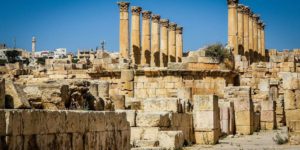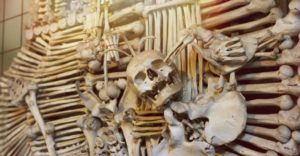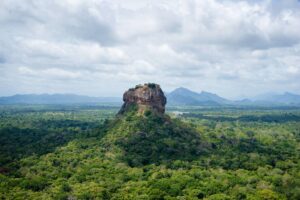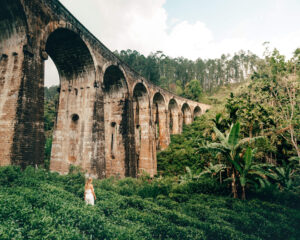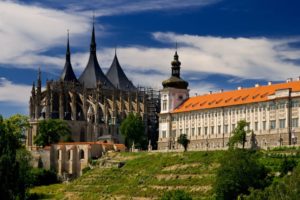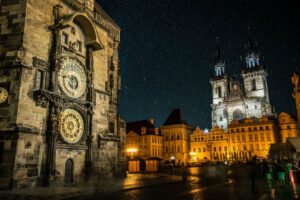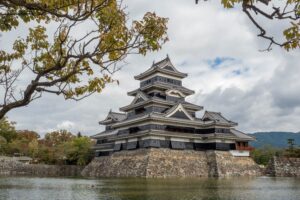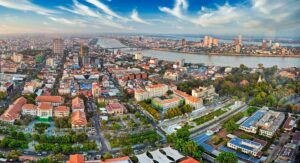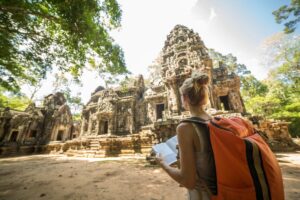The Koh Ker pyramids are one of the many mysterious places in Cambodia that are worthy of the attention of travelers. In 928, King Jayavarman IV decided to move the capital of the Khmer Empire from Angkor to Koh Ker, that is, approximately 60 kilometers.
Scientists have not yet found the reason for such a strange decision of the ruler. In addition, one of the most mysterious and mystical structures in the country was also built on the site of the former capital of Cambodia.
The seven-tiered Prasat Tom pyramid is unlike any other building built by the Khmers. Now it is called the Pyramid of Death in Cambodia. And although Koh Ker remained the capital for only two decades, the number of temples built here during this time is truly amazing.
Check this ultimate travel guide to Koh Ker temple and get more information about best time to visit, things to see and do, best day tours to join and other useful tips for first timers.
Koh Ker Temple History
The capital was moved to Koh Ker in the 10th century. But the territory of the future city was not uninhabited. Archaeologists have found that several communities lived on these plains, which settled here long before the formation of the Khmer Empire. Another surprising discovery of scientists is that not all temples on the territory of the former capital date back to the 10th century. So who were they built?
Koh Ker remains off the beaten track of Cambodia’s tourist trails, but is growing in popularity. The temple complex, once littered with mines, has recently become available to travelers. If you stay in Siem Reap, it will take about 2.30 hrs to reach the temple by car.
If you are planning to visit Koh Ker Temple and Preah Vihear , you can join day tour from Siem Reap. Click here to get more info about the tour and make your reservation.
Even now, the area is considered not completely cleared of mines, and therefore only part of the temples can be visited. However, Koh Ker remains one of the most impressive and mysterious archaeological sites in all Cambodia.

How to Explore the Koh Ker pyramids
The main temple of the complex is known as Prasat Thom and it is there that you will find a large seven-tiered pyramid. But Koh Ker also has other ruins to visit. It is impossible to get lost in the complex, as there is a road leading to each temple or ruin. And you can go back along it.
Entering the complex from the south, you will pass 3 or 4 temples to the seven-tiered Koh Ker pyramid and find approximately 10 ruins of various sizes after it. Many tourists only reach the pyramid, so if you go further, you can probably walk through the ruins of the temples almost alone.
You can walk around Koh Ker not only on foot. Bicycle rental is available in front of the complex. You can also hire a private driver who will take you around the area and stop at each temple.
The entrance to Prasat Tom costs $ 10, cash payment is accepted, as almost everywhere in Cambodia. Car or bike rental is paid additionally.
Next, we will tell you more about each structure in the complex and walk along the entire tourist route in the Koh Ker area.
The beginning of the path: three small temples
The first three structures that you will come across upon arriving in the area are some of the most interesting in Koh Ker. We recommend that you stop for a while and explore all three temples.
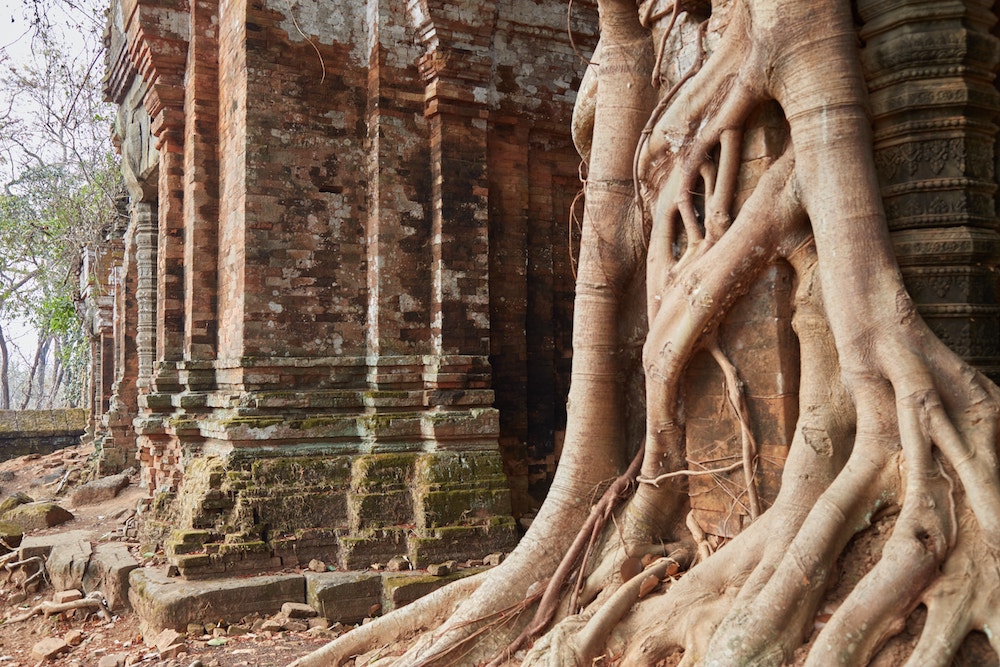
Prasat pram
Prasat Pram is a well-preserved temple that follows the standard layout of 10th century temples. In it you will find three prasata sanctuaries lined up with two buildings in front of them, which are known as “libraries”. Until now, no one knows exactly how the libraries were used. There are two versions: manuscripts and statues of deities were kept there, or the premises were used for special ceremonies in honor of the fire god Agni.
Prasat Pram gradually merges with the jungle thickets, forming a scene similar to the stills from the movie “Lara Croft: Tomb Raider”.
Prasat Neang Khmau
The peculiarity of Prasat Neang Khmau is that it is completely blackened. Perhaps this is the result of a forest fire that happened sometime in the past. But now this small temple with one sanctuary looks very unusual.
But there are also a few other unique aspects of this solitary prasat. Despite being dedicated to the god Shiva, the temple faces west, while all other Shiva temples built by the Khmers face east. In addition, the carving on the lintel above the door is made in the form of a rare image of the deity Brahma, although now this can hardly be discerned due to erosion.
Prasat Chen
This temple has the same layout as Prasat Pram. But Prasat Chen is the only temple in the city dedicated to the deity Vishnu. Today, there are practically ruins of prasat, but it was once in this temple that some of the best masterpieces of Khmer sculptural art were first discovered.
In the east tower was a sculpture of a scene from the Ramayana epic of Valin fighting Sugriva. The remains of this sculpture were found in 1952. And in 2012, another discovery was made in Prasat Chen. Archaeologists have discovered a group of statues depicting Duryodhana’s struggle with Bhima – the main scene from the Mahabharata epic.
But that’s not all. In 2014, researchers discovered three more pedestals, on which nothing remained except the legs of the statues. The rest of the statues have been stolen in past years.
One of these statues was the famous sculpture of Hanuman, which was kept for a long time in the Cleveland Museum of Art. Once the connection was established, the statue was immediately transferred to Cambodia. Denver is also believed to have a statue of Rama, which probably stood next to a sculpture of Hanuman. As of this writing, this cultural site has not yet been returned to Cambodia.
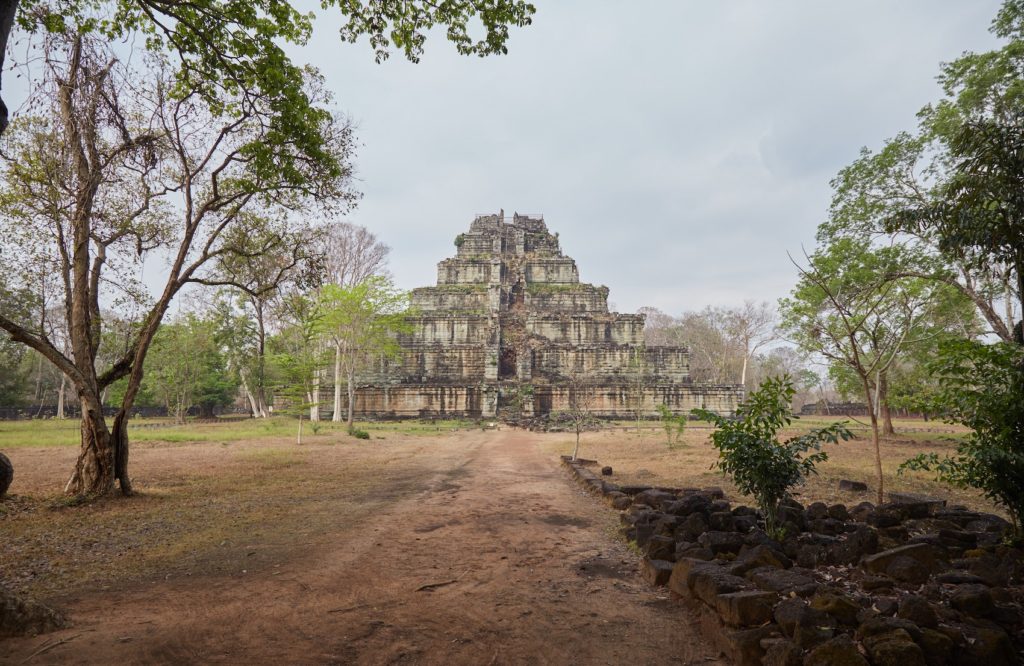
Pond Andun Peng
When approaching the main temple of the complex, you will see a small rectangular pond. This artificial reservoir is very reminiscent of the Royal Pond next to the former palace in Angkor Thom.
The main temple of the Prasat Thom complex and the seven-tiered pyramid of Koh Ker
Prasat Thom was a state temple for Jayavarman IV, like Angkor Wat or Bayon for later Khmer kings. While the highlight of the temple is the massive, self-contained pyramid called Prang, there is also a lot to see to the east as well.
The first thing that you will see is a cruciform structure consisting of long halls. Walking west, you will see a large brick sanctuary, which has survived to this day in very good condition. The dam, surrounded by a moat on both sides, is one of the most interesting parts of Prasat Tom.
Once upon a time, there were also long structures supported by columns, but most of them have been destroyed. Many of the buildings in the complex were made of wood that had long since rotted away, like the Preah Vihear gate.
In the area of the temple (in front of the Pyramid of Death itself) you will find many other structures: sanctuaries, galleries, libraries and gates. Some of them still stand, but many have fallen into ruins. The chaotic appearance of the temple only adds to the dramatic effect when the huge pyramids of Koh Ker, or Prang, finally come into view.
If before that you have already been in the Angkor Wat complex , then you will immediately understand that the pyramid is not similar to any structure from there. The Khmers loved to build pyramids. But other structures, such as Bakong and Bakeng, were built differently: they were decorated with all kinds of statues and shrines at every level.
Prang is a real pyramid without any sculptures, structures or carvings, except for the very top. Scientists believe that at the highest tier of the pyramid there was once a large shiva linga and a structure without a roof, but nothing of them remained. The uniqueness of this pyramid, which is more reminiscent of Mesoamerican architecture than that of Southeast Asia, has given rise to many mysterious legends regarding Prang and Koh Kera in general.
Could the relocation of the capital of an empire to a place as remote as Koh Ker have anything to do with the specific point on which Prang was erected? Could the Khmer emperor have known about some kind of energy that he wanted to channel with the help of a strangely constructed pyramid?
Now these riddles may sound naive, but the Khmers were very religious. For them, temples were complex mechanisms, the functions of which were to establish links between the divine and earthly kingdoms. And to construct them, certain mathematical proportions were used: almost like the computer code that runs behind the software that you use. Without well-written code, no program will run. The Khmer treated temples in the same way. Therefore, they would not choose the place to build the pyramid at random.
In the center of the Koh Ker pyramid, a stone staircase was laid, along which the emperor and priests climbed in ancient times. Now it is almost destroyed. Tourists can walk to the top along a special wooden platform. Climbing up, you will see the entire panorama of the temple complex and will be able to take very beautiful photos.
At the very top of the sanctuary there is an opening from which, according to Khmer legends, the linga once emerged. In ancient Indian mythology and some currents of Hinduism, this word was called a symbol of divine generating power. It is assumed that the hole went down to the ground, as in the main temples of Angkor Wat and Bayon. So the Khmers wanted to connect not only heaven and earth, but also the underworld.
At the top of the Koh Ker pyramid there is only one decoration – the head of an Atlantean lion, which is holding an object. Perhaps there the Khmers symbolized the sky or the linga.
Going down, you will see several paths: along them you can go around the pyramid and look at it from any angle. On one of these paths, there is a small white elephant sanctuary.
The inside of the Koh Ker pyramids is decorated with dozens of different statues and very beautiful carvings, which are more than a thousand years old. Now almost all of the sculptures have been moved to the Phnom Penh Museum due to prior looting. But Prang’s interiors are still impressive.

Eastern and southern temples
There are many other structures to the east and south of Prasat Thom. Just get out on the main road and follow it until you make a circle, looking at all the temples along the way. But first, visit the small temple directly opposite the entrance to Prasat Tom.
Temple Srot
You will see the temple just across the street from the entrance to Prasat Tom. It consists of two groups of long halls, each of which forms a rectangle surrounding the courtyard. However, the corridors of the temple are not connected. Stylistically, they are reminiscent of the Khleangs in Angkor Thom.
Perhaps the Srot Temple was formerly part of Prasat Toma.
Linga shrines
Next, you will come across a row of five shrines, each with a linga hole. These structures were carved from solid rocks to allow even more divine energy to flow from this place.
Interestingly, all the shrines in this row lack a roof.
Prasat Krakap
The first thing you’ll notice about Prasat Krakapa is the unusual design of its doorway. The same triangular pediments are found only in two other temples: Banteay Srei, near Angkor, and Preah Vihear, in the Dan Grek mountain range.
But Prasat Krakap was consecrated in 928, ahead of the other two by several decades.
Prasat Ple Beng
This temple is distinguished by an unusually large gate. In the old days, it was full of statues of various Hindu deities.
Now there are ruins from it.
Prasat Chrap
Another temple in the area, featuring the simple trimurti layout that was popular at the time. Unusually, the prasatas are facing west, like some of the other temples in this part of the city.
Scientists speculate that they were built to look at the barai (artificial reservoir), although the exact reason is unknown.
Prasat Op On
This temple consists of one sanctuary. It is believed to have been built after the reign of Jayavarman IV, but also in the 10th century.
Despite the fact that Koh Ker only functioned as the capital for 20 years, this place was not abandoned as soon as the seat of power moved back to Angkor. Later kings, up to Jayavarman VII at the end of the 12th century, continued to add new structures to the city.
Prasat Damrei
“Damrey” is translated as “elephant”. And this temple is replete with images of elephants. First of all, it was dedicated to Shiva, whose son was the elephant god Ganesha.
Here you can also find a carving depicting the three-headed elephant by Indra Airavata.
Prasat khar
Another mysterious temple on the territory of Koh Ker in Cambodia. Scientists believe that a massive lingua, reaching a height of 3 meters, was once located on the great pedestal of the temple. However, like the linga from the top of the Prasat Thom pyramid, nothing remained of it.
Near the temple there are carved images of animals and gods on stones. This is very reminiscent of the carvings on the top of Mount Kulen at a place called Kbal Spin. Stone carvings like this are quite rare in ancient Khmer ruins.
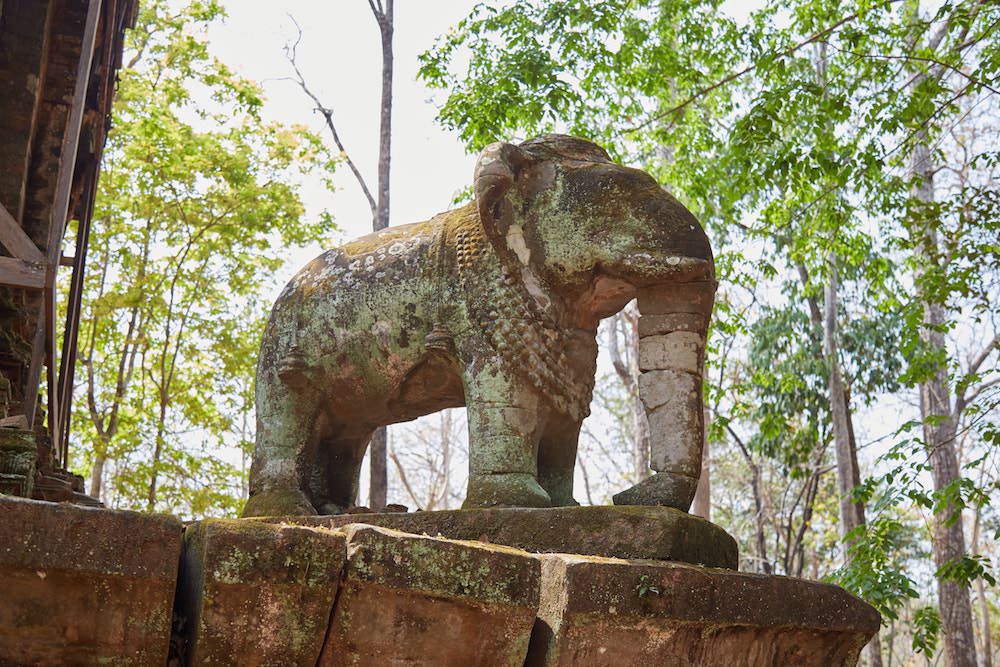
Conclusion
Whatever forced Jayavarman IV to move the capital to Koh Ker, the other kings soon returned to Angkor. Over the next several centuries, the construction of Koh Ker was maintained and expanded. But here’s the interesting thing: while Koh Kera’s exquisite sculptural art will influence Khmer artists for years to come, none of the later kings will attempt to copy the enigmatic Prang.
Scientists still do not know why the pyramid looks so unusual and what is the secret behind Koh Ker. But research continues. And one day we will probably be able to find out the questions to these answers.



